I had dinner last night with an elderly and eminent print collector and art historian. He specialises in the eighteenth century – the period when the quantity of text being produced last exploded by an order of magnitude – and embodies many of the assumptions of that period. The printed word is always meaningful; all printed matter is precious; even the minutiae of history are worth preserving.
So when not writing authoritative texts on engravings of Stubbs, he collects ephemera. To the uninitiated, that’s postcards, leaflets, adverts – basically anything printed, however trivial it might seem – and delivers great sacks of the stuff to the Bodleian Library at intervals to be sifted and, if deemed important, archived.
I tried to imagine what it would be like attempting to keep up with modern-day ephemera. I asked him: in an era of mass desktop self-publishing, is it even conceivable or possible to try and keep up? How can one collect and archive such stuff? He said they usually only take stuff from periods up to around the ’50s or ’60s as a rule. But somewhat to my surprise, he insisted that ephemera was more important today than ever, precisely because of computers: “Sooner or later anything on a computer gets erased. If we don’t collect some print how will anyone know what happened?”.
I’m not sure that delivering sacks of home-printed yoga adverts and party invitations to the Bodleian Library is the answer. But it did make me pause. While pamphlets, books and other ephemera give us some clue as to what life was like three centuries ago, what provisions are we making for our own mass memory? Will this neophiliac digital culture be stored on the future equivalent of floppy drives, only to end up becoming just as swiftly obsolete and unreadable? Answers on a postcard.
Category Archives: memory
jp google
In these first few generations of personal computing, we’ve operated with the “money in the mattress” model of data storage. Information assets are managed personally and locally – ?on your machine, disks or external drives. If the computer crashes, the drive breaks, it’s as though the mattress has burned. You’re pretty much up the creek. Today, though, we’re transitioning to a more abstracted system of remote data banking, and Google and its competitors are the new banks. Undoubtedly, there are great advantages to this (your stuff is more secure in multiply backed-up, networked data centers; you don’t need to be on your machine to access mail and personal media) but the cumulative impact on privacy ought to be considered.
The Economist takes up some of these questions today, examining Google’s emerging cloud of data services as the banking system of the information age:
Google is often compared to Microsoft…but its evolution is actually closer to that of the banking industry. Just as financial institutions grew to become repositories of people’s money, and thus guardians of private information about their finances, Google is now turning into a custodian of a far wider and more intimate range of information about individuals. Yes, this applies also to rivals such as Yahoo! and Microsoft. But Google, through the sheer speed with which it accumulates the treasure of information, will be the one to test the limits of what society can tolerate.
Google is swiftly becoming a new kind of monopoly: pervasively, subtly, intimately attached to your personal data flows. You – ?your data profile, your memory, your clickstreams – ?are the asset now. The banking analogy is a useful one for pondering the coming storm over privacy.
Also: expect excellent coverage and analysis of these and other Google-related issues very soon on Siva Vaidhyanathan’s new book blog, The Googlization of Everything, which is set to launch here in early September.
the encyclopedia of life
E. O. Wilson, one of the world’s most distinguished scientists, professor and honorary curator in entomology at Harvard, promoted his long-cherished idea of The Encyclopedia of Life, as he accepted the TED Prize 2007.
The reason behind his project is the catastrophic human threat to our biosphere. For Wilson, our knowledge of biodiversity is so abysmally incomplete that we are at risk of losing a great deal of it even before we discover it. In the US alone, of the 200,000 known species, only about 15% have been studied well enough to evaluate their status. In other words, we are “flying blindly into our environmental future.” If we don’t explore the biosphere properly, we won’t be able to understand it and competently manage it. In order to do this, we need to work together to help create the key tools that are needed to inspire preservation and biodiversity. This vast enterprise, equivalent of the human genome project, is possible today thanks to scientific and technological advances. The Encyclopedia of Life is conceived as a networked project to which thousands of scientists, and amateurs, form around the world can contribute. It is comprised of an indefinitely expandable page for each species, with the hope that all key information about life can be accessible to anyone anywhere in the world. According to Wilson’s dream, this aggregation, expansion, and communication of knowledge will address transcendent qualities in the human consciousness and will transform the science of biology in ways of obvious benefit to humans as it will inspire present, and future, biologists to continue the search for life, to understand it, and above all, to preserve it.
The first big step in that dream came true on May 9th when major scientific institutions, backed by a funding commitment led by the MacArthur Foundation, announced a global effort to launch the project. The Encyclopedia of Life is a collaborative scientific effort led by the Field Museum, Harvard University, Marine Biological Laboratory (Woods Hole), Missouri Botanical Garden, Smithsonian Institution, and Biodiversity Heritage Library, and also the American Museum of Natural History (New York), Natural History Museum (London), New York Botanical Garden, and Royal Botanic Garden (Kew). Ultimately, the Encyclopedia of Life will provide an online database for all 1.8 million species now known to live on Earth.
 As we ponder about the meaning, and the ways, of the network; a collective place that fosters new kinds of creation and dialogue, a place that dehumanizes, a place of destruction or reconstruction of memory where time is not lost because is always available, we begin to wonder about the value of having all that information at our fingertips. Was it having to go to the library, searching the catalog, looking for the books, piling them on a table, and leafing through them in search of information that one copied by hand, or photocopied to read later, a more meaningful exercise? Because I wrote my dissertation at the library, though I then went home and painstakingly used a word processor to compose it, am not sure which process is better, or worse. For Socrates, as Dan cites him, we, people of the written word, are forgetful, ignorant, filled with the conceit of wisdom. However, we still process information. I still need to read a lot to retain a little. But that little, guides my future search. It seems that E.O. Wilson’s dream, in all its ambition but also its humility, is a desire to use the Internet’s capability of information sharing and accessibility to make us more human. Looking at the demonstration pages of The Encyclopedia of Life, took me to one of my early botanical interests: mushrooms, and to the species that most attracted me when I first “discovered” it, the deadly poisonous Amanita phalloides, related to Alice in Wonderland’s Fly agaric, Amanita muscaria, which I adopted as my pen name for a while. Those fabulous engravings that mesmerized me as a child, brought me understanding as a youth, and pleasure as a grown up, all came back to me this afternoon, thanks to a combination of factors that, somehow, the Internet catalyzed for me.
As we ponder about the meaning, and the ways, of the network; a collective place that fosters new kinds of creation and dialogue, a place that dehumanizes, a place of destruction or reconstruction of memory where time is not lost because is always available, we begin to wonder about the value of having all that information at our fingertips. Was it having to go to the library, searching the catalog, looking for the books, piling them on a table, and leafing through them in search of information that one copied by hand, or photocopied to read later, a more meaningful exercise? Because I wrote my dissertation at the library, though I then went home and painstakingly used a word processor to compose it, am not sure which process is better, or worse. For Socrates, as Dan cites him, we, people of the written word, are forgetful, ignorant, filled with the conceit of wisdom. However, we still process information. I still need to read a lot to retain a little. But that little, guides my future search. It seems that E.O. Wilson’s dream, in all its ambition but also its humility, is a desire to use the Internet’s capability of information sharing and accessibility to make us more human. Looking at the demonstration pages of The Encyclopedia of Life, took me to one of my early botanical interests: mushrooms, and to the species that most attracted me when I first “discovered” it, the deadly poisonous Amanita phalloides, related to Alice in Wonderland’s Fly agaric, Amanita muscaria, which I adopted as my pen name for a while. Those fabulous engravings that mesmerized me as a child, brought me understanding as a youth, and pleasure as a grown up, all came back to me this afternoon, thanks to a combination of factors that, somehow, the Internet catalyzed for me.
remembering with social networks
With 75 percent of all college students on Facebook, and websites like New York Times becoming social-network aware, it’s not surprising that in just a few years, for many, social networks are the preferred method for staying in contact (rivaling email, phone and instant message, which are in themselves new technologies). And we should expect this trend to continue; there are even social networks for toddlers! Ostensibly this means that associations from the moment we are born will be cataloged and easily recalled.
It’s a bizarre prospect but it seems like that’s where we are headed.
Having all this information about your social group so readily available reminds me of a point Dan raised in the post “The Persistence of Memory,” where he compares the internet to the story of Funes, a man who after an accident finds himself with perfect memory:
Give it time, though: in a decade, there will be a generation dealing with embarrassing ten-year-old MySpace photos. Maybe we’ll no longer be embarrassed about our pasts; maybe we won’t trust anything on the Internet at that point; maybe we’ll demand mandatory forgetting so that we don’t all go crazy.
If the internet, like Funes, can haunt us with our memories, I think it can also rob us from the need to recall.
A few months ago I met with an old friend, who I had not seen in years, and his wife. The next time we met he told me that his wife recognized me and that when she looked through old class photos she found a photo of us sitting next to each other in first grade. “What’s her name again!” I asked excitedly and wave of memories came rushing back to me. It’s as if the act of unlocking memories (as long as they are not unpleasant memories) opens a valve that briefly activates all your emotions at once; like picking up the scent of an old lover.
Dunbar’s number states that 150 is the maximum number of individuals we can maintain social relationships with. I wonder if the excitement occurs when the person falls off your “Top 150” and quickly get backs on. It’s interesting to think that these sorts of serendipitous encounters might become much less common as you have access to the whereabouts of everyone you’ve ever encountered, cheapening each realization and never allowing anyone to fall off the list for long enough to make it unique.
the persistence of memory
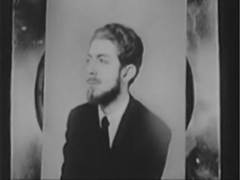 Jorge Luis Borges tells the story of “Funes, the Memorious,” a man from Uruguay who, after an accident, finds himself blessed with perfect memory. Ireneo Funes remembers everything that he encounters; he can forget nothing that he’s seen or heard, no matter how minor. As one might expect, this blessing turns out to be a curse: overwhelmed by his impressions of the world, Funes can’t leave his darkened room. Worse, he can’t make sense of the vast volume of his impressions by classifying them. Funes’s world is made up entirely of hapax legomena. He has no general concepts:
Jorge Luis Borges tells the story of “Funes, the Memorious,” a man from Uruguay who, after an accident, finds himself blessed with perfect memory. Ireneo Funes remembers everything that he encounters; he can forget nothing that he’s seen or heard, no matter how minor. As one might expect, this blessing turns out to be a curse: overwhelmed by his impressions of the world, Funes can’t leave his darkened room. Worse, he can’t make sense of the vast volume of his impressions by classifying them. Funes’s world is made up entirely of hapax legomena. He has no general concepts:
“Not only was it difficult for him to see that the generic symbol ‘dog’ took in all the dissimilar individuals of all shapes and sizes, it irritated him that the ‘dog’ of three-fourteen in the afternoon, seen in profile, should be indicated by the same noun as the dog of three-fifteen, seen frontally. His own face in the mirror, his own hands, surprised him every time he saw them.”
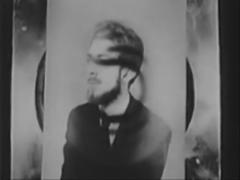 (p. 136 in Andrew Hurley’s translation of Collected Fictions.) Funes dies prematurely, alone and unrecognized by the world; while we are told that he died of “pulmonary congestion,” it’s clear that Funes has drowned in his memories. While there are advantages to remembering everything, Borges’s narrator realizes his superiority to Funes:
(p. 136 in Andrew Hurley’s translation of Collected Fictions.) Funes dies prematurely, alone and unrecognized by the world; while we are told that he died of “pulmonary congestion,” it’s clear that Funes has drowned in his memories. While there are advantages to remembering everything, Borges’s narrator realizes his superiority to Funes:
“He had effortlessly learned English, French, Portuguese, Latin. I suspect, nevertheless, that he was not very good at thinking. To think is to ignore (or forget) differences, to generalize, to abstract. In the teeming world of Ireneo Funes there was nothing but particulars – and they were virtually immediate particulars.”
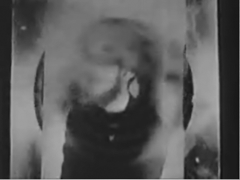 (p. 137) Borges’s story isn’t really about memory as much as it is about how we make sense of the world. It’s important to forget things, to ignore the minor differences between similar objects. We recognize that the dog the Funes sees at three-fourteen and the dog that he sees at three-fifteen are the same; Funes does not. Funes dies insane; we, hopefully, do not.
(p. 137) Borges’s story isn’t really about memory as much as it is about how we make sense of the world. It’s important to forget things, to ignore the minor differences between similar objects. We recognize that the dog the Funes sees at three-fourteen and the dog that he sees at three-fifteen are the same; Funes does not. Funes dies insane; we, hopefully, do not.
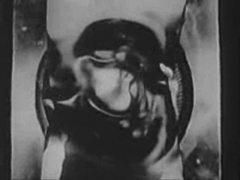 I won’t pretend to be the first to see in the Internet parallels to the all-remembering mind of Funes; a book could be written, if it hasn’t already been, on how Borges invented the Internet. It’s interesting, however, to see that the problems of Funes are increasingly everyone’s problems. As humans, we forget by default; maybe it’s the greatest sign of the Internet’s inhumanity that it remembers. With time things become more obscure on the Internet; you might need to plumb the Wayback Machine at archive.org rather than Google to find a website from 1997. History becomes obscure, but it only very rarely disappears entirely on the Internet.
I won’t pretend to be the first to see in the Internet parallels to the all-remembering mind of Funes; a book could be written, if it hasn’t already been, on how Borges invented the Internet. It’s interesting, however, to see that the problems of Funes are increasingly everyone’s problems. As humans, we forget by default; maybe it’s the greatest sign of the Internet’s inhumanity that it remembers. With time things become more obscure on the Internet; you might need to plumb the Wayback Machine at archive.org rather than Google to find a website from 1997. History becomes obscure, but it only very rarely disappears entirely on the Internet.
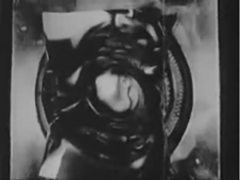 A recent working paper by Viktor Mayer-Schoenberger, a professor at Harvard’s Kennedy School of Government, recognizes the problems of the Internet’s elephantine memory. He suggests pre-emptively dealing with the issues that are sure to spring up in the future by actively building forgetting into the systems that comprise the network. Mayer-Schoenberger envisions that some of this forgetting would be legally enforced: commercial sites might be required to state how long they will keep customer’s information, for example.
A recent working paper by Viktor Mayer-Schoenberger, a professor at Harvard’s Kennedy School of Government, recognizes the problems of the Internet’s elephantine memory. He suggests pre-emptively dealing with the issues that are sure to spring up in the future by actively building forgetting into the systems that comprise the network. Mayer-Schoenberger envisions that some of this forgetting would be legally enforced: commercial sites might be required to state how long they will keep customer’s information, for example.
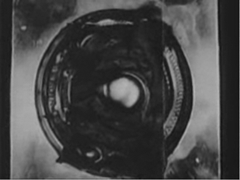 It’s an interesting proposal, if firmly in the realm of the theoretical: it’s hard to imagine that the public will be proactive enough about this issue to push the government to take issue any time soon. Give it time, though: in a decade, there will be a generation dealing with embarrassing ten-year-old MySpace photos. Maybe we’ll no longer be embarrassed about our pasts; maybe we won’t trust anything on the Internet at that point; maybe we’ll demand mandatory forgetting so that we don’t all go crazy.
It’s an interesting proposal, if firmly in the realm of the theoretical: it’s hard to imagine that the public will be proactive enough about this issue to push the government to take issue any time soon. Give it time, though: in a decade, there will be a generation dealing with embarrassing ten-year-old MySpace photos. Maybe we’ll no longer be embarrassed about our pasts; maybe we won’t trust anything on the Internet at that point; maybe we’ll demand mandatory forgetting so that we don’t all go crazy.
Images from Hollis Frampton’s film (nostalgia), 1971.
a network of books

This is the “cover” (it’s an email mag) of the latest issue of artkrush. Part of a 2004 installation by Moroccan artist Mounir Fatmi called “The Connections.”
Connections is the outcome of a reflection which began in the early Nineties, at the time of the war in the Gulf…. At that time, the operations Desert Storm and Desert Fox, preceding the last operation which could be named “Desert, full stop”, established the era of a media oriented war, therefore a war of image, on the very spot of the Revelation, that of the three sacred books, a historic place dedicated to communication. They clearly showed the lack of means of communication and even the lack of communication power of the Arab countries as well as the resurgent fear of technology.
In our calendar, that of Hegira, we are today in 1420, eternally nomads. Our roots are clearly set in the future, as the Arab poet Adonis wrote it. For me, it is an attempt to enter this desert, this collective memory, to remove sand from objects which may lose their identity through the changing of material but will still keep their memory.
A recent comment from Adam Greenfield, author of the just-published “Everyware: The Dawning Age of Ubiquitous Computing,” seems apropos:
I’ve become all but unable to think of the objects around me except in terms of Actor-Network theory, as sort of depositions or instantiations of a great deal of matter, energy and information moving through the world. And of course, a book is nothing but a snapshot in that regard; you have to do a lot of extra work if you want to prise out and examine the flows it is a part of, or even those it has set up.
memory fails
flash memory: “the digital paper age”?
Heads are spinning in response to Samsung’s planned release of a 16 gigabyte flash drive – a string of eight 2GB flash memory cards. Flash memory is solid state data storage, as opposed to the conventional hard drive, which contains spinning mechanical parts. The implication is that the price of memory for computers will soon drop dramatically, as will the amount of energy used to power them. Moreover, you will be able to carry millions upon millions of pages on something the size of a keychain (people will probably start using smaller ones as business cards before too long). There’s definitely something reassuring about the solidity – to rely entirely on a single, rickety hard drive, or a network, to store documents is incredibly risky and unreliable. Plus, these cards are far more tolerant of shocks, bad weather and all around abuse.
Chosun Ilbo describes the remarks of Hwang Chang-gyu, Samsung’s chief executive, who said:
…the development signaled the opening of the “digital paper age.” “In the same way that civilization rapidly progressed after paper was invented 2,000 years ago, flash memory will serve as the ‘digital paper’ to store all kind of information from documents to photos and videos in the future. Mobile storage devices like CDs and hard disks will gradually disappear over the next two or three years, and flash memory will dominate the information age.”

